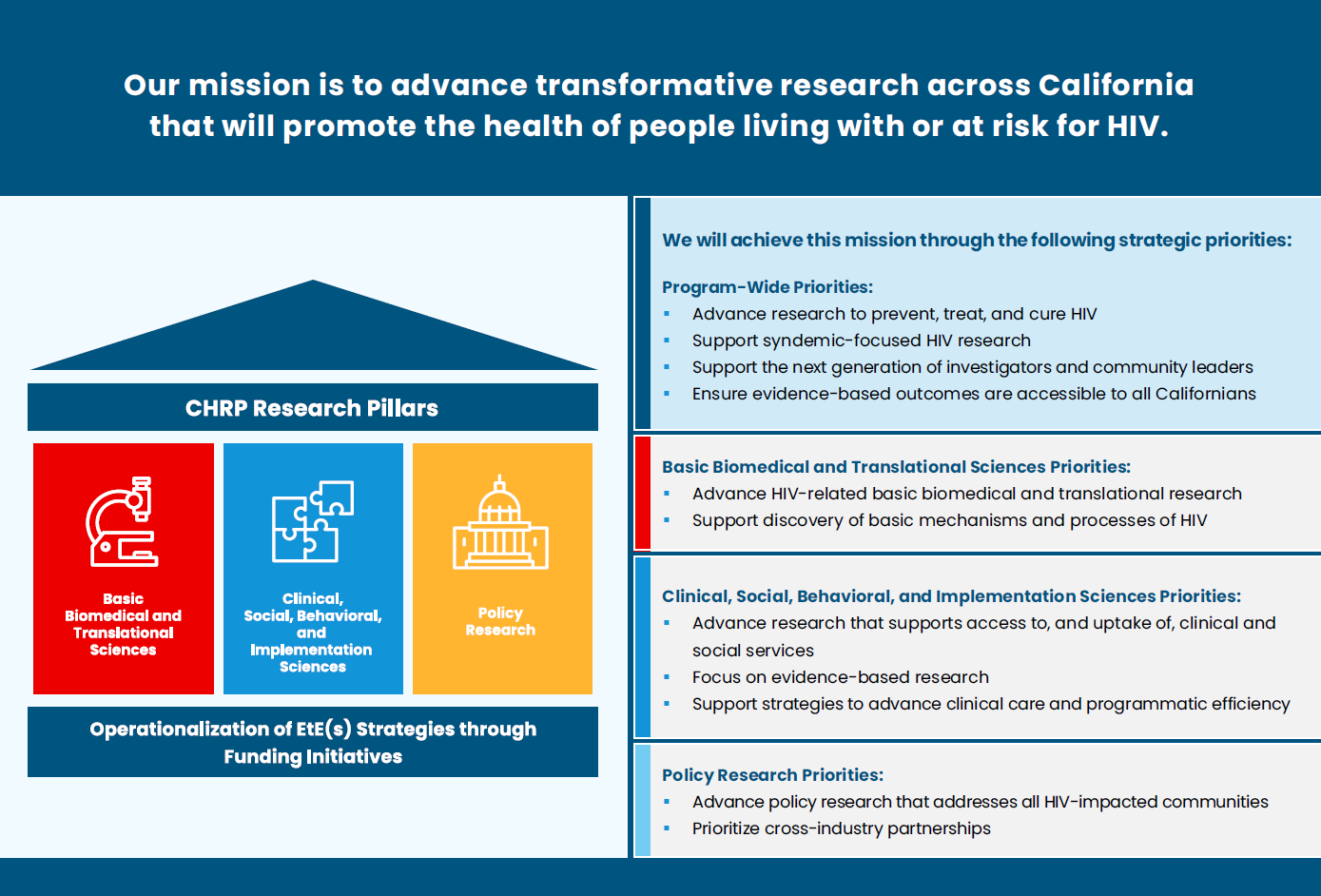Mission Statement & Strategic Directions 2025 - 2030
The following Mission Statement & Strategic Priorities outlines our programs continuing support for novel HIV and HIV Syndemics research across the state over the next five years.
In addition, our Learning & Evaluation Strategy (below) outlines our commitment to ensuring transparency and fairness in our grantmaking policies and procedures.

